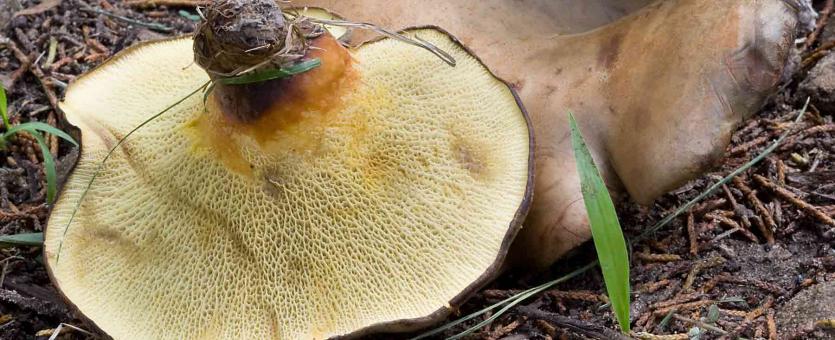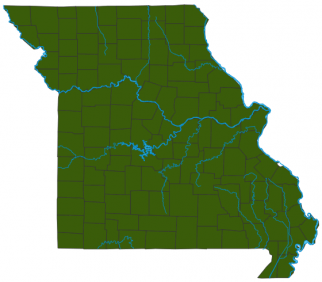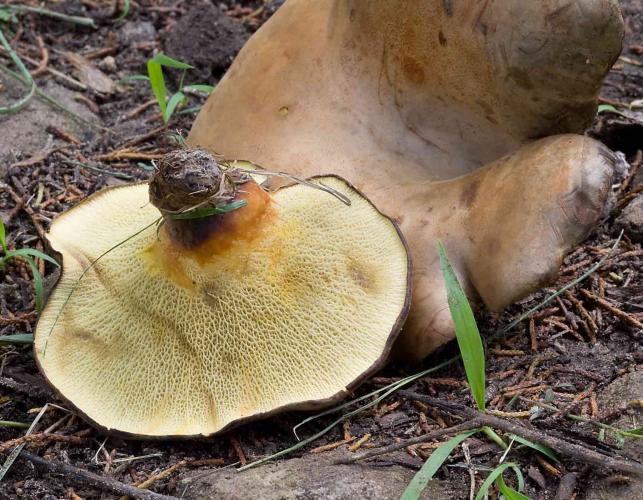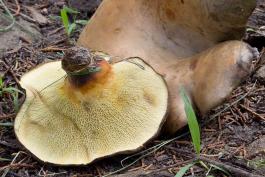
Pored, with a brownish, wavy cap, off-center stalk, and clearly defined pores. Grows scattered on the ground near ash trees. June–October. Cap slightly humped to flat to deeply sunken; yellowish brown to reddish brown; flesh is yellowish, sometimes turning bluish green; texture dry, dull, soft; margin is curved in when young, and spreading, wavy, and uplifted when mature. Pores large; shallow, uneven; light yellowish, bruising to dark olive; arranged in a radial pattern, and quite beautiful. The pores of the ash tree bolete adhere to the cap of the mushroom; most other boletes have easily detachable pores. Stalk thick; brownish, bruising reddish brown; texture dry solid, off-center. Spore print olive brown. Spores magnified are elliptical. There are no lookalikes in Missouri.

Habitat and Conservation
Status
Life Cycle
Human Connections
Ecosystem Connections


Mushrooms are a lot like plants, but they lack chlorophyll and have to take nutrients from other materials. Mushrooms are neither plants nor animals. They are in a different kingdom — the fungi. Fungi include the familiar mushroom-forming species, plus the yeasts, molds, smuts, and rusts.
Always be cautious when eating edible mushrooms. Be absolutely sure of the ID, and only eat a small amount the first time you try it to avoid a reaction..





















